
- HOME PAGE
- TOURS LIST
- SITE INDEX
- TOUR SUMMARY
-
TOUR BLOG
DAY 1 - BANGKOK/NAKHON LAMPANG, 31 JANUARY 2013 DAY 2 - NAKHON LAMPANG, 01 February 2013 DAY 3 - NAKHON LAMPANG/PAI, 02 February 2013 DAY 4 - PAI, 03 February 2013 DAY 5 - PAI/MAE HONG SON, 04 February 2013 DAY 6 - MAE HONG SON, 05 February 2013 DAY 7 - MAE HONG SON, 06 February 2013 DAY 8 - MAE HONG SON/MAE SARIANG, 07 February 2013 DAY 9 - MAE SARIANG/MAE SOT, 08 February 2013 DAY 10 - MAE SOT/KAMPHAENG PHET, 09 February 2013 DAY 11 - KAMPHAENG PHET, 10 February 2013 DAY 12 - KAMPHAENG PHET/BANGKOK, 11 February 2013Day 11, Sunday 10 February 2013 - Kamphaeng Phet
Yet another songtheaw, day trip 8 February..... I'm awake quite early and continue with my notes. Presumably because of increased traffic in the evening I was unable to upload material for my website yesterday. I’m making every effort to keep my notes up to date as this tour, in particular, has provided such a wealth of information it's really hard to summarize it in any meaningful way, but each day has to start somewhere. The breakfast coupon I received is sure welcome as ordinarily I wouldn't go out of my way for an American breakfast. It's a good start.
My stay at BanPoh Garden House has allowed me to be more adventurous today, but first I need to figure out a way to get to the city, 2 kilometres away. Being a Sunday there isn't too much local transport available, so I decide to walk in the direction of the bus station about 15 minutes away, but already there is evidence of what I came to Kamphaeng Phet for, directly opposite the motel. Here are the ruins of Thung Setthi Fortress.
I soon add to this by walking past another ruin, Wat Sumko but soon the bus terminal comes into view. I inquire about renting a motorbike but regardless of whether I'm getting an honest answer, I fear this is a replication of what happened in Mae Sot. But there is a difference. To bypass Kamphaeng Phet is to throw away a golden opportunity to visit a listed World Heritage Site of archeological significance, such is the importance of this city in history. At the bus station, offered the use of a songtheaw for the day I soon agree a price which I don't consider unreasonable at all. What will follow is without doubt a grand finale to this tour and one which I never expected. I'm really up for it now!
I head across the Ping River and out to the north-western suburbs of Kamphaeng Phet and into Kamphaeng Phet Historical Park. It doesn't take me long to realize the sheer scale of this site. What remains of the old city are the dominant features of the time, devoutly religious, with chedis, viharns and high alters housing Buddhist images, a sign of faith. The Fine Art Department has depicted reconstructions of the various temple complexes, so one can appreciate what they would have looked like in their former glory. Allowing for lunch, this site absorbs several hours and I wonder whether the songtheaw driver realizes the interest I am taking, but he doesn't complain. By mid afternoon I visit the important Wat Phra Kaew and the nearby Wat Phra That are within the imposing city walls. Opposite these are two museums, the Kamphaeng Phet National Museum and the Provincial Museum of Kamphaeng Phet and I take these in as well. By this time it's late afternoon.
I next ask to stop to take photos of the Ping River, then back across the bridge I get a view of one of the older structures, Wat Nongyaichuiy. Finally I visit the more modern temple, Wat Borommathat Chetiyaram behind the main bus terminal. I'm nearly back where I started so it's time to say farewell to my driver. He really has been patient so I'm happy to include a tip. After an essential clean-up, I can have dinner but my walking around isn't finished for the day as the restaurant I used yesterday is closed today, being a Sunday. Today has been most worthwhile and I've added immensely to my knowledge base particularly about Thai history. I guess it's time to start winding down with a cold beer but recording the sites I've visited will take time.
Kamphaeng Phet Historical Park.....
The ruins at Kamphaeng Phet date back to the 15th and 16th century, the city itself being an important frontier town during the Ayutthaya period. It's location on the Ping River made it an important city state based on commerce and trade. It was clearly worth defending and a strong city wall had been built around it in laterite to defend it against the Burmese in particular. The ancient sites of Muang Kamphaeng Phet and Muang Nakhon Chum across the river were registered as national monuments by the Fine Arts Department on 8th March 1935. On 18th April 1991 the Fine Arts Department declared the site open to the public and at a conference held in Carthage, Tunisia on 12th December that year the ancient site at Kamphaeng Phet was declared a World Heritage Site.
The park itself consists of perhaps half a dozen principle sites but precludes a host of other sites in the park that suggests an organized hierarchy existed at the time based on religion. The following list is presented in order of visit rather than significance and is by no means complete. There is no doubt about the extent and importance of Kamphaeng Phet Historical Park. A substantial quantity of artifacts and historic objects have been discovered and removed for safe keeping but who knows what else lies buried underground lying undisturbed for centuries. Entry fee 150 baht. This also includes entry to Wat Phra Kaeo and Wat Phra That at a separate location.
Wat Avasa Yai..... Wat Avasa Yai dates from 15th-16th century. Parts of the boundary walls are missing, the only one standing is the Kam Phang Kaew of Phuttawat. Situated on the large base are chedis of different shapes, 8 on each side. The large hall or vihara stands on a raised Paitee base with porches at the front and back. The main chedi sits on an octagonal base, each side measuring 16 metres. The design of the chedi is unknown as the upper part is missing, but it was thought to be bell-shaped. Outside the boundary wall is the Sangkhawat where evidence of monks' residences can be found together with a sala, pond and toilet. In front of the temple is a large pond lined with laterite known as Bo Sam Saen.
Wat Rim Tang..... Wat Rim Tang is in the north of the Aranyik district of Kamphaeng Phet city. The principle structure is the laterite viharn surrounded by a temple enclosure connected by square laterite posts. Apart from this, remains of a sala base, monks' residence, pond and bathroom also exist.
Wat Chang Rob..... Wat Chang Rob is a large temple situated at the highest point of the hill. Its main chedi of Ceylonese style is in the middle of the complex, but its top part is missing. The base, measuring 31 metres each side is adorned with 68 half-elephants between which are Bhoti-shaped designs decorated with lime sculpture. On top of the base (Lan Prataksin) are four stupas, one in each corner. There are four staircases around the base, one on each side, decorated with lime sculptures of guardian lions. There are also traces of demon and female dancers' figures remaining. The viharn on a redented base is in front and the ubosoth in the northeast corner. The large laterite pond is in front of the viharn and has existed since the temple was first constructed.
Wat Phra Sing (Wat Singha)..... Wat Phra Sing is believed to have been constructed during both the Sukhothai and Ayutthaya periods. With laterite walls, it has a square-shaped principal chedi with arches on four sides. The chedi is made of brick, but the upper part is in ruins. A photograph taken during the reign of King Rama V of the Rattanakisin period and fragments of moldings around the base suggests that the principle chedi was bell-shaped. The ubosot (ordination hall), decorated with lotuses, has walls of laterite, build in long rows of balusters with the front part of the base decorated with guardian lion and Naga sculptures. The raised base of the hall was where the monks would sit in front of the pedestal on which sits the Buddha image which still exists today.
Wat Phra Si Iriyabot..... Wat Phra Si Iriyabot is located to the north of Wat Phra Non and has similar pond and bathroom facilities to its neighbour. Walls on the four sides are of laterite and brick materials as is the entrance. A mondrop structure in the centre enshrines Buddha stuccos in four postures, walking, sitting, standing and reclining in the Sukhothai artistic style. Today the statue in the standing posture is the best preserved. The rectangular viharn has a raised base where the monks would sit in front of the principal Buddha image sited on a pedestal. The viharn would have had a single roof extended on both sides.
Wat Phra Non..... Wat Phra Non is rectangular and oriented to the east. It is fenced in by laterite walls on four sides. The temple is divided into two parts. The Sangkhawat contains the monks' living quarters. Here there are a square-shaped pond, bathrooms and an ancient floating pavilion which is supported by a large laterite column. The entire column was cut out in one single piece from its source and measures 1.1 metres on each side and 6.4 metres in height, the largest such stone in the country. A lion sculpture and Sema stones (boundary stones) can still be discerned. An example is in the Kampheang Phet National Museum. The Phuttawat contains of a large viharn which once housed the Reclining Buddha image which has crumbled entirely. The pillars would have supported a single roof extended on both sides. The ubosot (ordination hall) is in laterite covered in lime plaster and has balconies at front, back and sides. The columns for supporting the roof are octagonal.
Wat Pa Mue Nok..... Wat Pa Mue Nok is sited near the park entrance gate. It was build between the 14th-15th century. The laterite Buddha images here are particularly interesting. The details of the faces were inscribed in bas-relief on laterite, not on stucco, as are other images seen elsewhere. The temple, facing east, is rectangular and contained within four laterite walls. The viharn is at the front next to the principle stupa which is encircled by five other stupas.
Wat Pekaram..... Wat Pekaram consists of two groups of historic ruins with a wall surrounding each. Five round bell-shaped chedis, placed in order, are at the front. At the rear is a raised platform in laterite.
Wat Ma Khet..... Wat Ma Khet contains a high rectangular hall (viharn) without a wall. There is a porch connected at the front and four staircases leading up to the hall. The base of the principle chedi was adorned with lotuses with niches on two sides but no Buddha images were found. An unadorned base of another chedi, in the form of lotuses, still exists.
Wat Ma Khok..... Wat Ma Khok is a rather insignificant temple owing to its state of decay. It has a low rectangular base with square laterite pillars which supported the roof. The remains of the principle chedi are on the base with supports for the bell of the chedi.
Wat Phra Kaeo and Wat Phra That complex..... Wat Phra Kaeo is a large royal temple in the town centre near a site believed to have been a palace. The temple itself was used on important city events and had no monks in residence. The major feature is the principal chedi with lion-adorned base and a round chedi with an elephant-adorned base. The main monastery (viharn) connected to the principle chedi was constructed on a large rectangular base in laterite. On the opposite side is the viharn which houses the seated and reclining Buddha images while another smaller viharn is situated beside that. Nearby are the bases of two mondrops (pavilions). There are other chedis on different bases within the complex. Its boundary is marked off by laterite walls.
Wat Phra That is second in size to Wat Phra Kaeo. Here the principal chedi is built of a mixture of laterite and bricks with a 15-metre wide square base. The style is of Kamphaeng Phet architecture.
Other sites in and around Kampaeng Phet
Thung Setti Fortress..... Situated outside the town wall to the south of Nakhon Chum, this square fortress was made of laterite, with sides of 84 metres, and gates on each side. The northern side is completely destroyed. The fortress was fortified by battlements and enclosed by parapets with openings for defence. Watchtowers projected from the four corners, and small openings in the lower part of the walls allowed entry. Considering the similarity between these small entrances and window openings from the Ayutthaya period (starting from the reign of King Narai the Great), it is possible that Thung Setthi fortress was built around the middle Ayutthaya period, under the influence of European architecture.
Wat Sumko..... Wat Sumko is a small chedi built in laterite on a square base situated in Nakhon Chum district of Kamphaeng Phet. It could date from 14th to 15th century at a time when Nakhon Chum was the principal town in the area. See also Wat Nong Yai Chuai.
Fortress Ban Non Gate..... Ban Non Gate is just one of the fortress gates that surrounded the old city enclosing the royal temple. Today it lies outside the visitor complex on the other side of the road.
Kamphaeng Phet City Pillar Shrine..... The City Pillar Shrine is located to the north of Wat Phra Kaew and is believed to give spiritual protection to the city. The construction of the Pillar Shrine resembles a Prang. The original Pillar Shrine, believed to be more than 700 years old, was brought from the Historical Park. It is a sacred place where people come to worship. Many people driving past the shrine blow their horns to show respect.
Provincial Museum of Kampaeng Phet..... Near the National Museum, the Provincial Museum of Kampaeng Phet concentrates on the development of the Central Regions, it's trade and commerce from early times, it's architecture and culture. There are exhibitions on local history with city development, lifestyle and urban and hill tribal customs and traditions. Entry fee 20 baht.
Kamphaeng Phet National Museum..... Located on Pindamri Road in Mueang district, the National Museum contains ancient objects and other antique arts articles from various eras found in the provincial town. The museum houses exhibits on two floors. The first exhibit hall concentrates on the time from pre-history, an age of hunter-gatherers through to the development of city states in the Dvaravati period, a time of Hindu influence and Khmer culture to early Sukhothai and Lopburi periods. The second exhibit hall concentrates more on the Ayutthaya period with exhibits found in the historical park and more recent objects from the Rattanakosin period. A prize exhibit is a bronze statue of Shiva found in a shrine in Kampheang Phet city. It was cast in 1510. Other exhibits include sculptured and earthen designs, heads of Buddha statues, traditional celadon products, sculptures of demons and celestial and human beings used to decorate chedi bases or viharns. Entry fee 100 baht.
Ping River……..The Ping River is an attraction in its own rite. Rising in Doi Tuay, Daen Lao Range in Chiang Mai province the Ping River which, together with the Nan River, are the two main sources of the Chao Phraya River joining together near Nakhon Sawan. Already at some 400 kilometres from the Gulf of Thailand this is an impressive waterway that easily explains the strategic importance of Kamphaeng Phet and the earlier settlement of Nakhon Chum.
Wat Nong Langka..... Wat Nong Langka is one of a group of important temples located to the south of Kamphaeng Phet, outside the town walls, in the Aranyik area of Nakhon Chum. As such, they pre-date the main historic city built in the Ayutthaya period, but only traces of this settlement exist today as a result of construction and agriculture. See also Wat Sumko.
Wat Borommathat Chetiyaram..... Wat Borommathat Chetiyaram is a temple situated in the centre of Mueang Nakhon Chum featuring a Burmese-style chedi. To the south is an ubosot housing several Sukhothai and Ayutthaya-style bronze Buddha statues. The chedi itself is believed to originally have been a Sukhothai-type structure, its style having been altered during restoration work financed by a wealthy Burmese merchant known as Phraya Taka, about a century ago.
Footnote..... Checking through various websites it appears that I have covered all the main sites in Kamphaeng Phet Historical Park as well as a number of other important sites. Well I didn't. As I review and collate all the material I have, one thing becomes clear. To really cover in one day what Kampaeng Phet has to offer without sending your head into a spin is ambitious to say the least. I would recommend two full days here; the first day covering the Historic Park itself and the second day visiting the museums and surrounding sites.
Next Page.
Kamphaeng Phet Province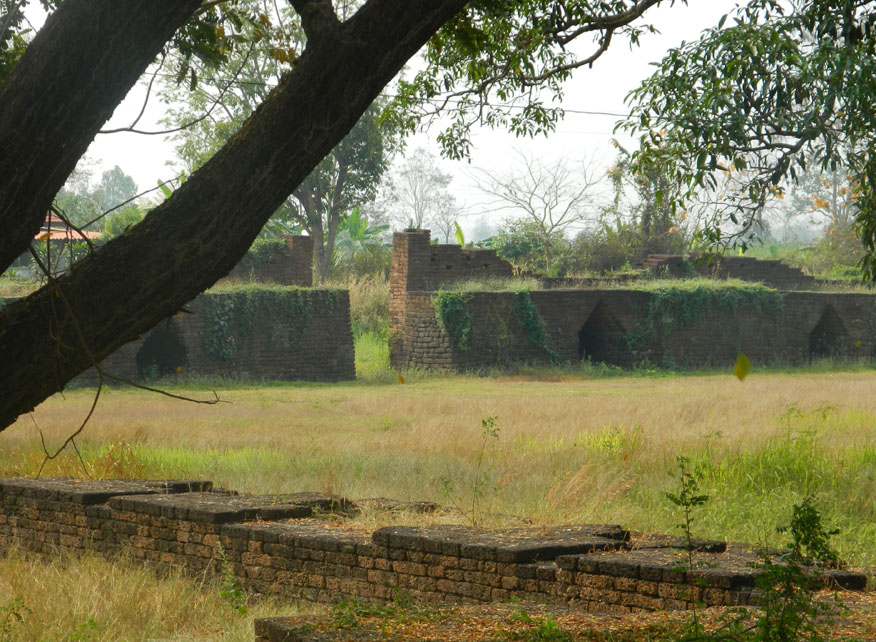
Part of the Battlements and parapets at Thung Setti Fortress
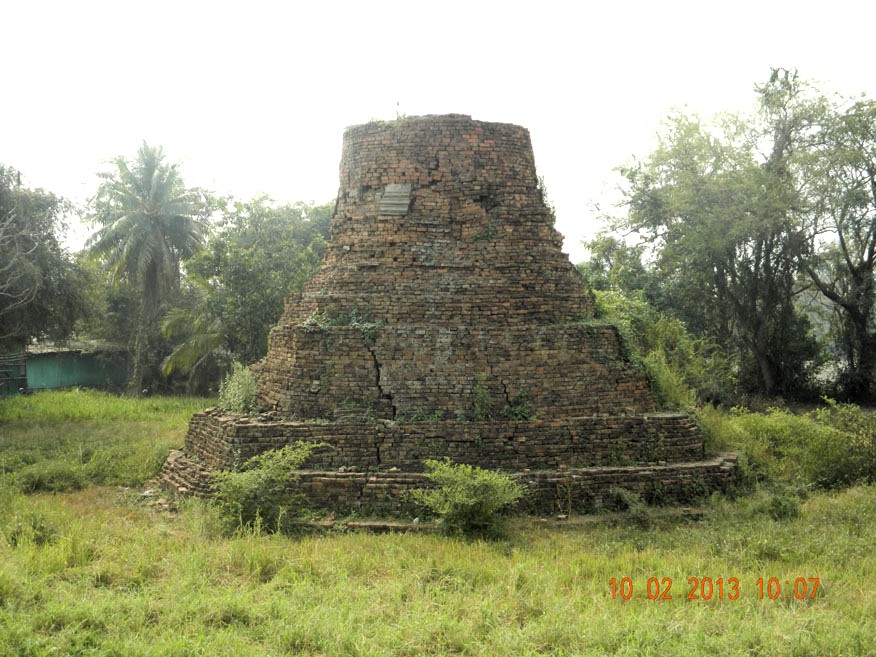
The ruined Chedi at Wat Sumko
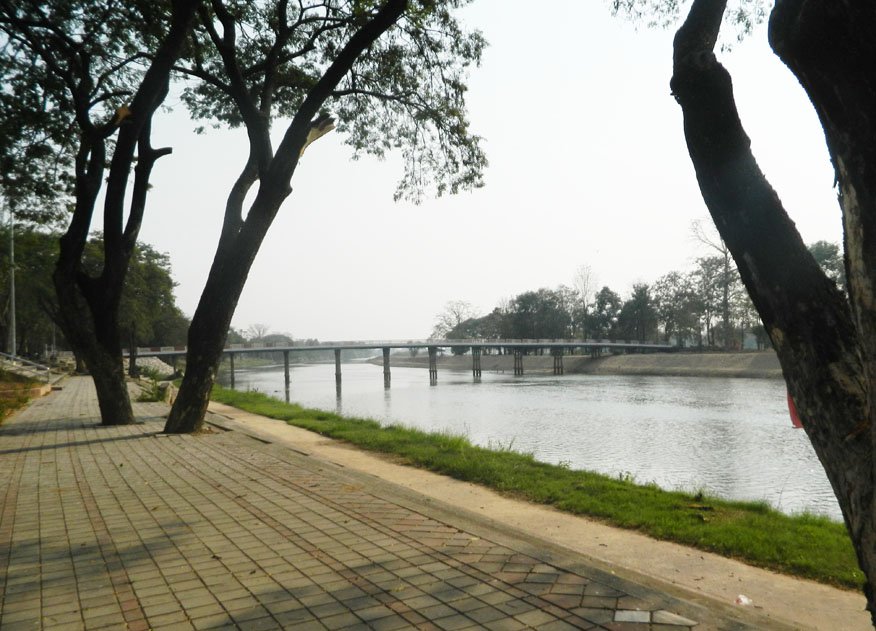
View of the Ping River at Kampheang Phet
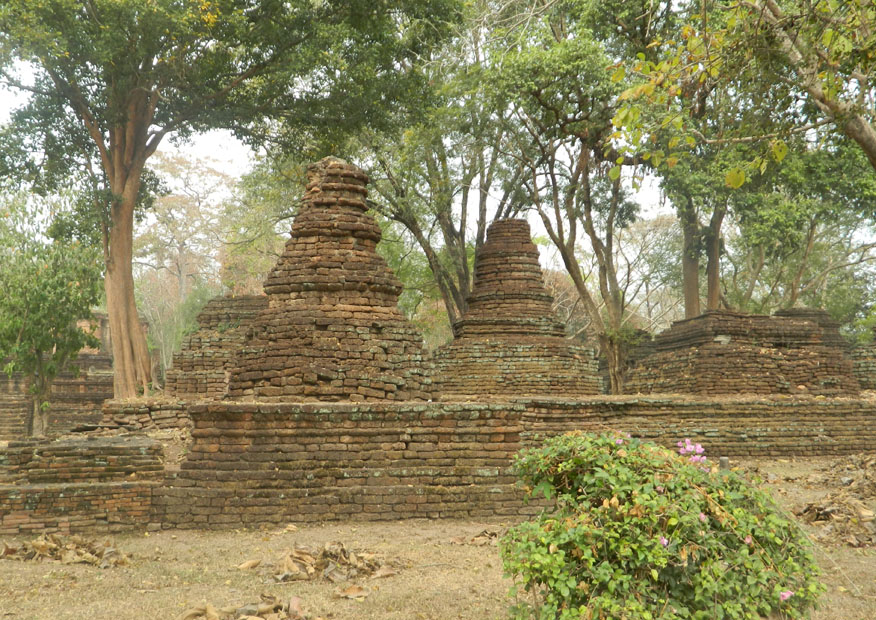
The Ruins at Wat Avasa Yai,
Kampheang Historical Park
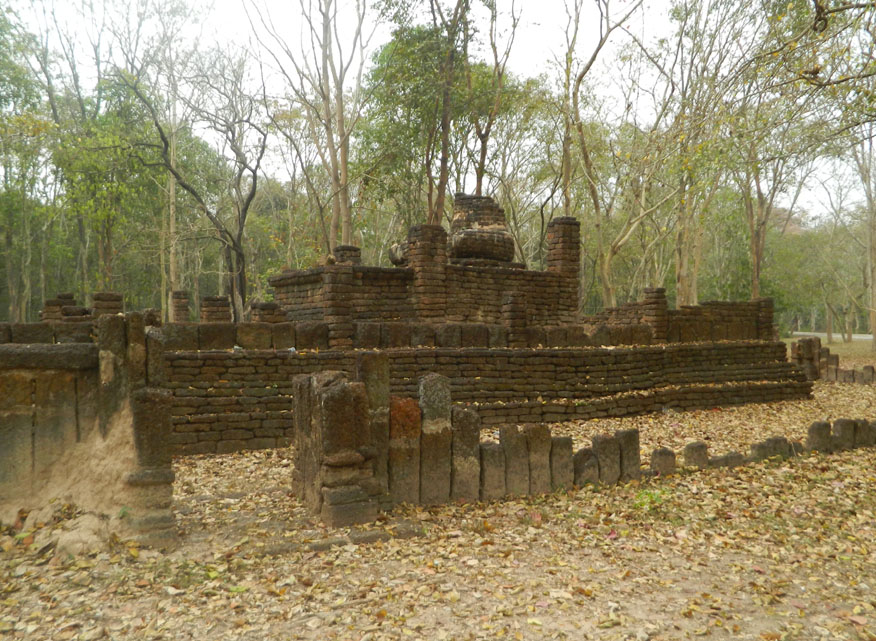
The Ruins at Wat Rim Tang,
Kampheang Historical Park
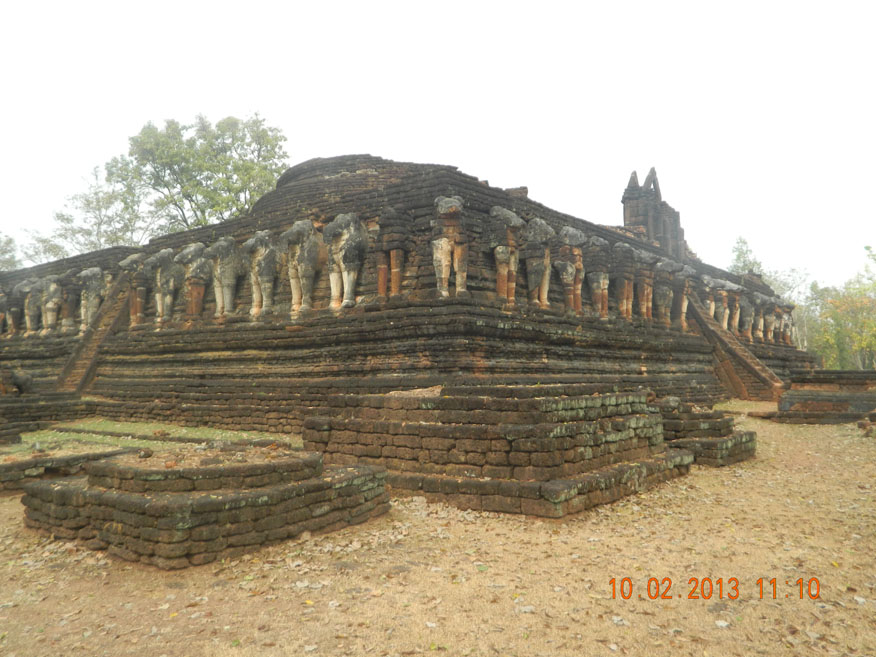
The Ruins at Wat Rim Tang,
Kampheang Historical Park
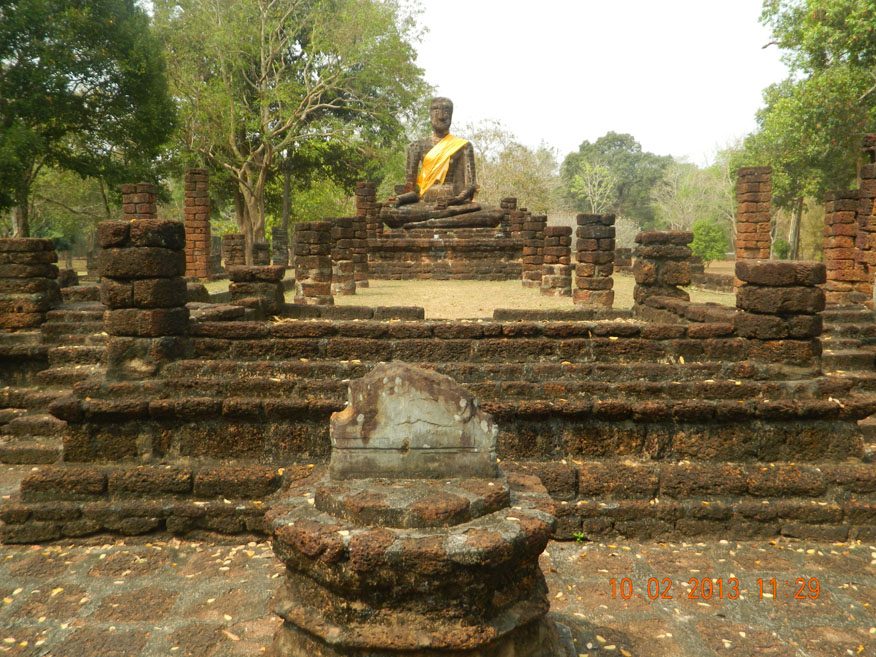
The Ruins at Wat Sing (Wat Singha), Kampheang Historical Park
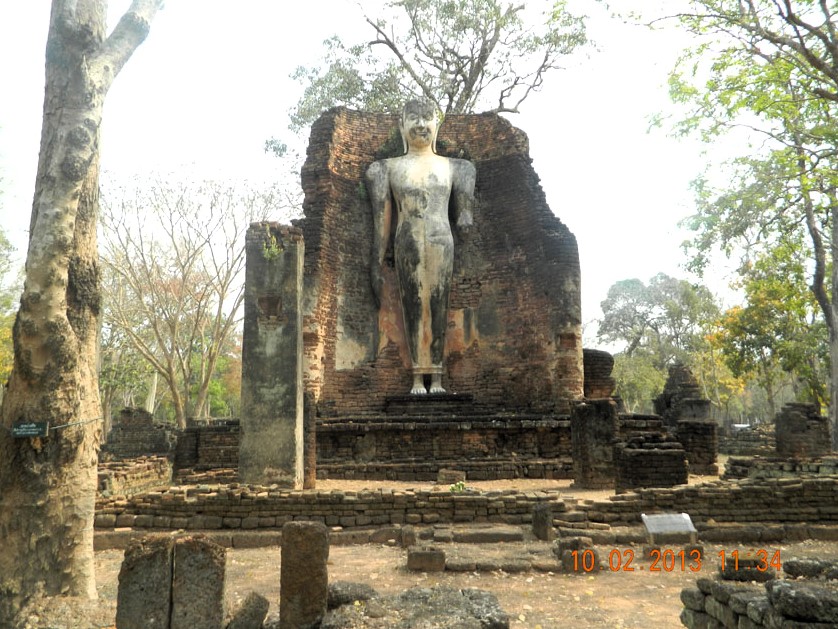
The Ruins at Wat Phra Si Iriyabot,
Kampheang Historical Park
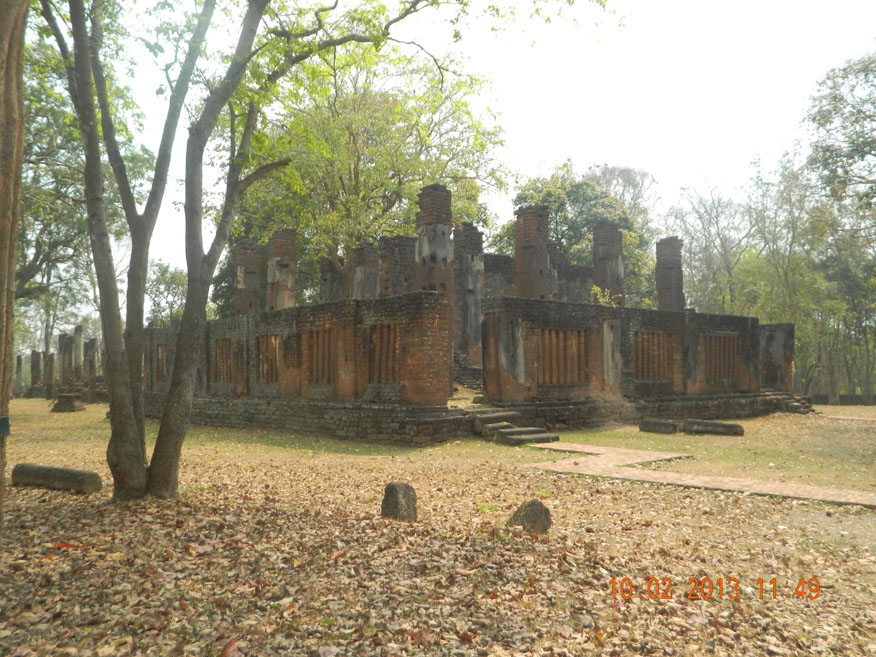
The ruins at Wat Phra Non,
Kampheang Historical Park
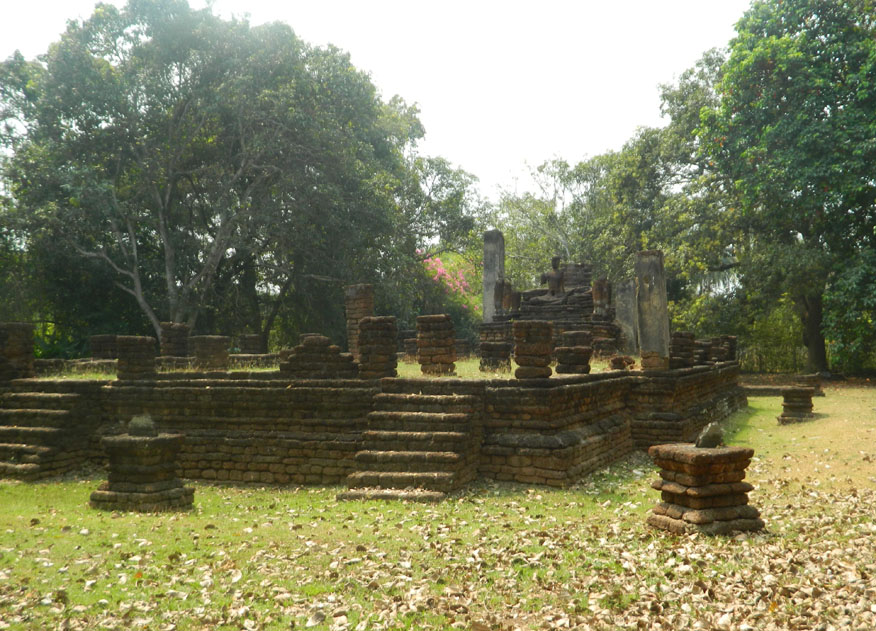
The Ruins at Wat Pa Mue Nok,
Kampheang Historical Park
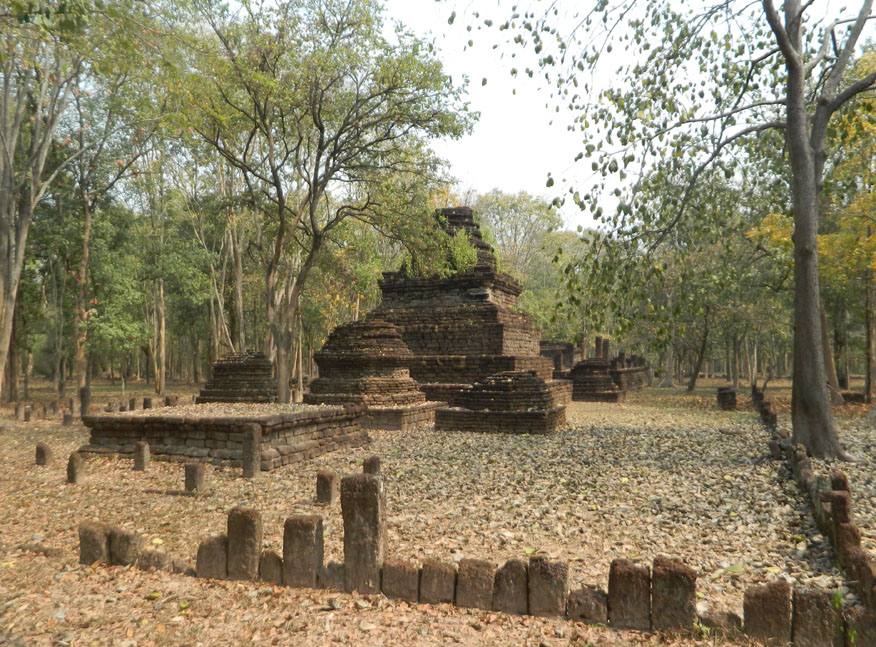
The ruins at Wat Pekaram,
Kampheang Historical Park
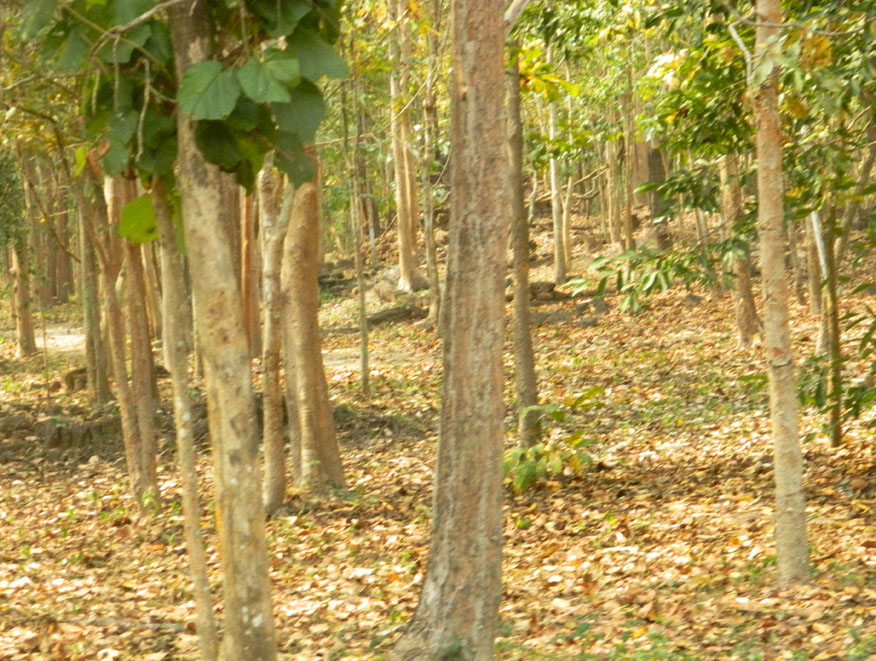
The ruins at Wat Ma Khok,
Kampheang Historical Park
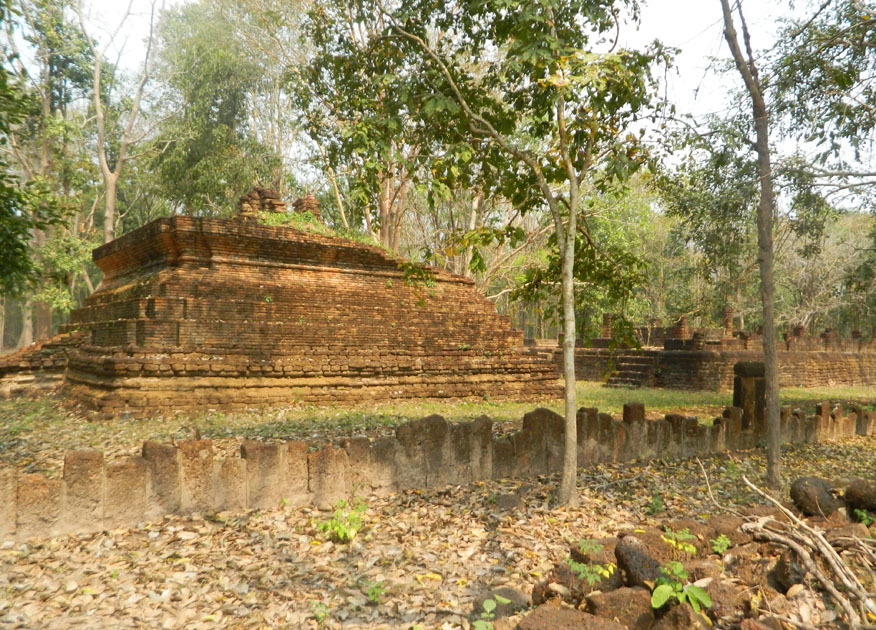
The Ruins at Wat Ma Khet,
Kampheang Historical Park
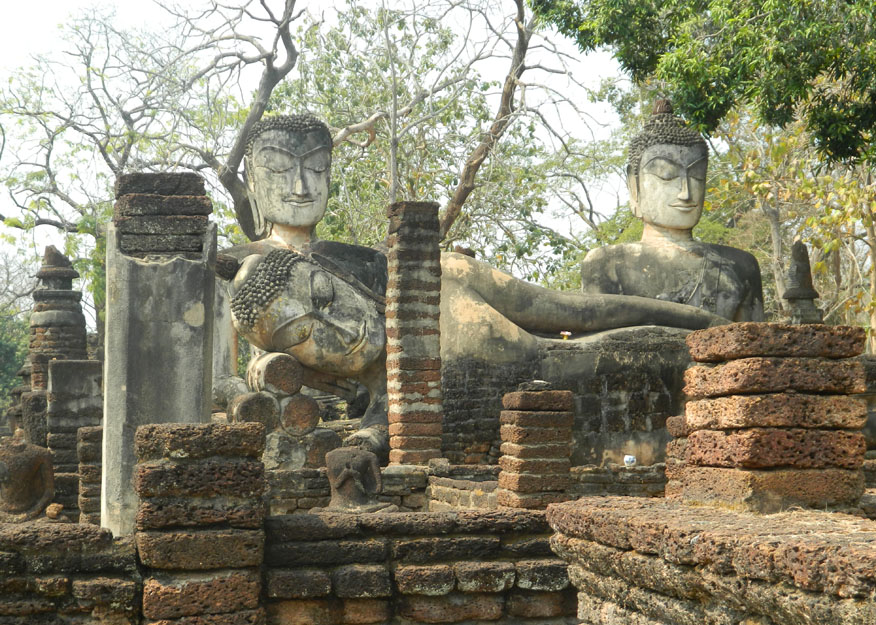
Three Buddha Images at Wat Phra Kaeo, Kampheang Historical Park
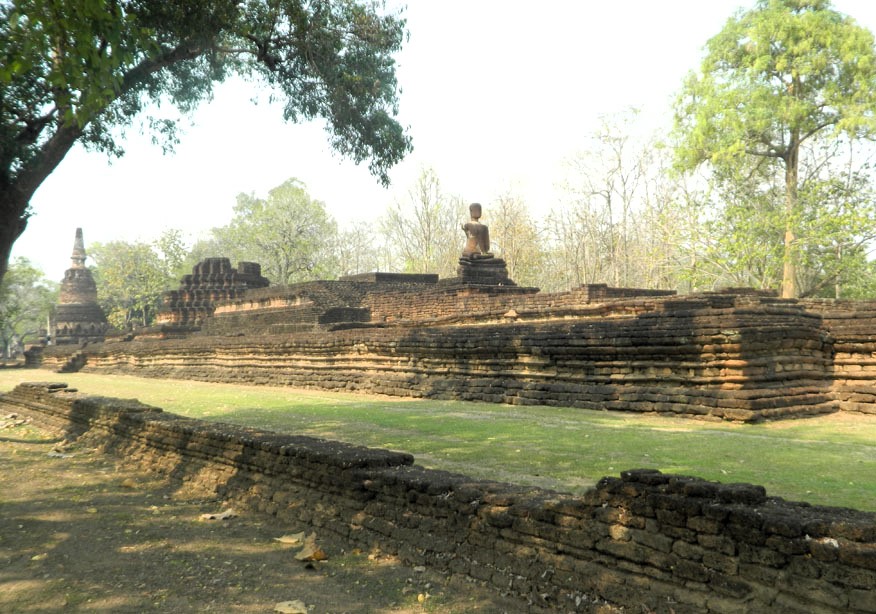
The Ruins at Wat Phra That,
Kampheang Historical Park
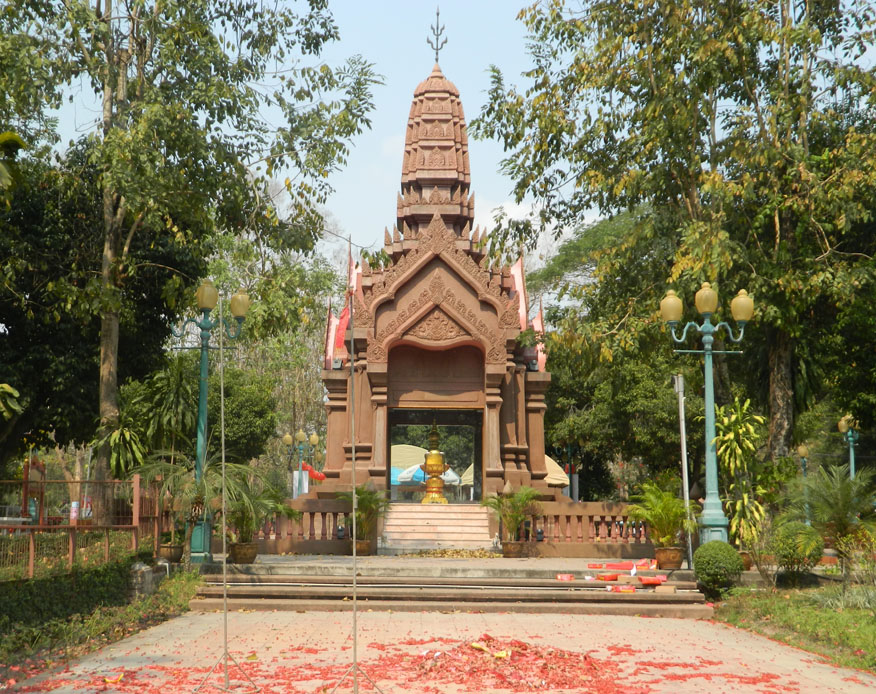
Kampheang Phet City Pillar Shrine
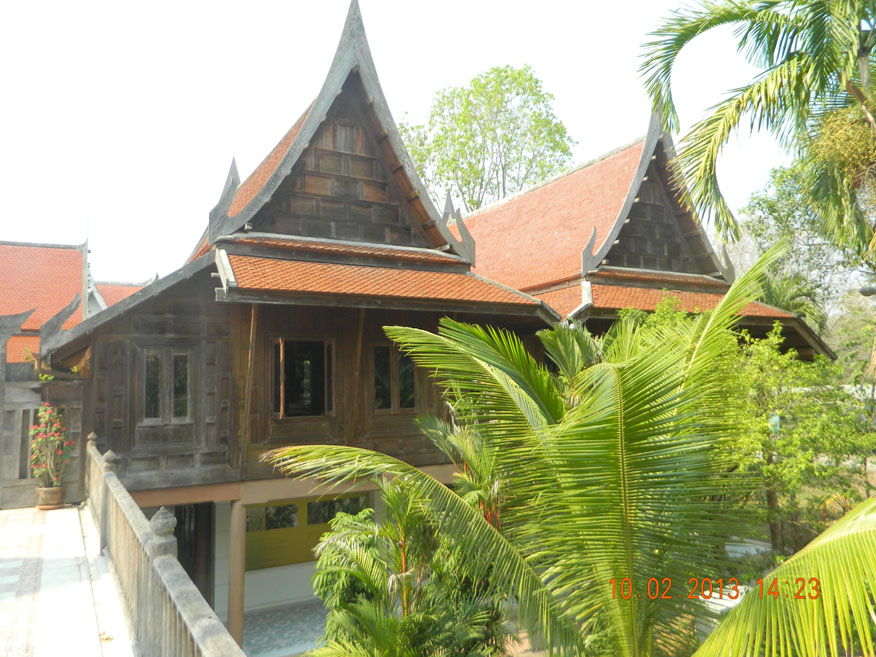
Provincial Museum of Kamphaeng Phet
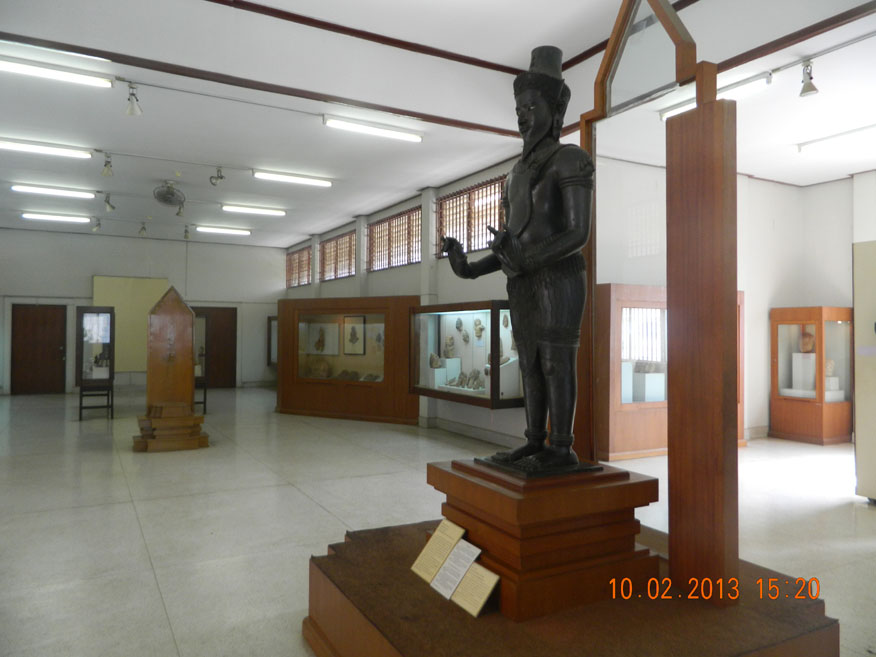
The bronze Statue of Shiva at Kamphaeng Phet National Museum
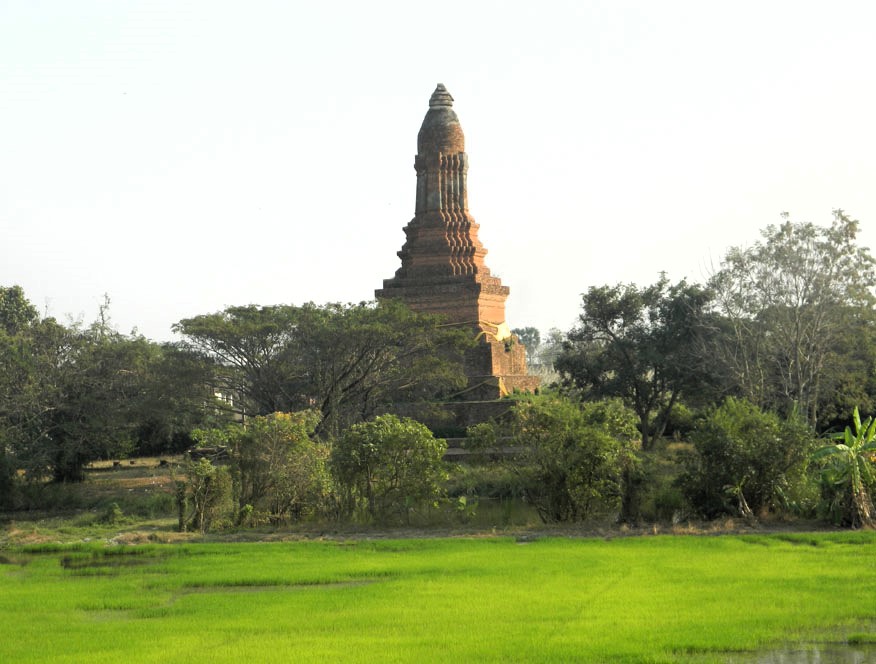
The Ruins at Wat Nong Yai Chuai
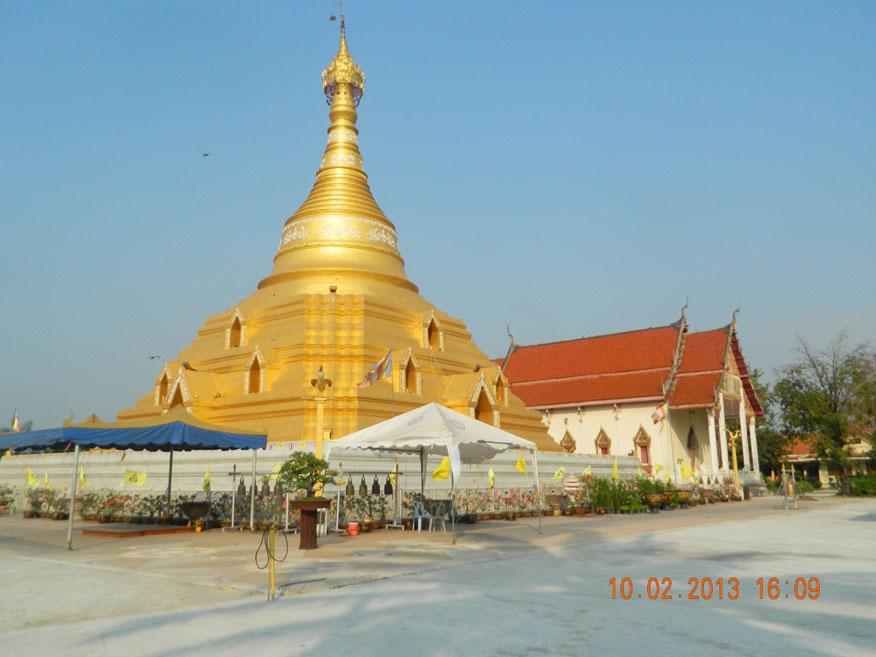
Wat Borommathat Chetiyaram